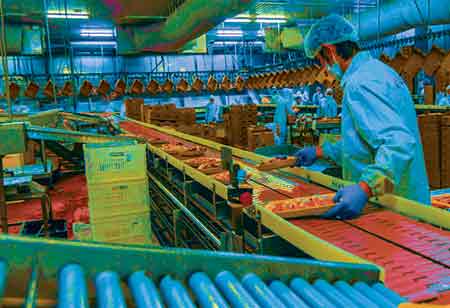Thank you for Subscribing to Food Business Review Weekly Brief
Food Companies Transforming Food Packaging Using IoT
The foodservice industry is a developing part where the IoT can create actual value for the businesses which deliver, distribute, and sell the products.

By
Food Business Review | Sunday, February 13, 2022
Stay ahead of the industry with exclusive feature stories on the top companies, expert insights and the latest news delivered straight to your inbox. Subscribe today.

Most industries have begun implementing the IoT and other emerging technologies, but the food and beverage sector has remained a little dispassionate or slower to adopt the new advancements.
The foodservice industry is a developing part where the IoT can create actual value for the businesses which deliver, distribute, and sell the products. The food & beverage industry, without any doubt, can work with its highest potential by adopting IoT. IoT assists companies in gaining higher food safety standards, improving traceability, reducing wastage, and reducing expenses across various stages of food processing and packaging.
One of the main goals of the food and beverage industry is to deliver the greatest quality of food likely to the end consumer, which can directly depend on the food storage before it attains the basket of the consumer. Balancing adequate temperature and humidity levels is also one of the major concerns for storing delicate food products like meat or dairy. Any concession in food storage can affect its quality and, thus, result in severe losses through the failed and expired inventory.
After applying the Food Safety Modernization Act (FSMA) in the United States, it has behaved as a catalyst for a wider transformation worldwide in the food and beverages industry. The advancements help concentrate on food safety through prevention rather than reacting to a food contamination problem after it has occurred. Therefore, the food and beverage solutions empowered by IoT lend a hand to the companies to stay flexible and still stick to the FSMA regulations.
Moreover, food and beverage logistics can use IoT technology in their operations, such as tracking the inventory in real-time and supporting automated replacement shipments. For example, by applying RFID transmitters or GPS systems, the industry can monitor the working of the distribution chain. As a result, it enables organizations to be informed of the customers' preferences, and address market needs much better without waste.
The RFID tracking technology also receives extraordinary food supply chain transparency and benefits by automating the delivery and shipping processes that track and control the storage temperature. Moreover, it enables the shippers to follow the product's location with the help of GPS and collect valuable data based on the relative performances in different regions.






